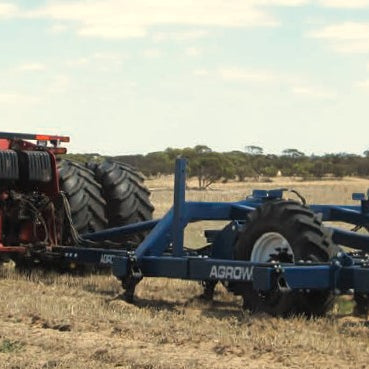
ALL STATES & TERRITORIES
Trials in the Western Australian Wheatbelt have found deep ripping combined with topsoil slotting can increase yields from sandy soils more than by just deep ripping alone.

The optimal method for alleviating compacted subsoils and enabling roots to reach soil moisture and nutrients at greater depths is through deep tillage. By adding options to the shank, like inclusion plates, yields can be increased.
Trials in the Western Australian Wheatbelt have found deep ripping combined with topsoil slotting can increase yields from sandy soils by more than deep ripping alone.
Inclusion plates open 'slots' below the surface of the soil behind deep ripping tynes to help direct the loosened topsoil into the furrow.
By incorporating deep ripping and topsoil slotting techniques, grain loss due to hot and dry spring weather can be mitigated. The slot zone provides essential nutrients and water to the crops, even in dry topsoil which can minimise losses.
Other soil constraints such as soil acidity, sodicity, and non-wetting soils, can be alleviated using topsoil slotting. This can be achieved by applying soil ameliorants, such as organic matter, lime, and gypsum at the time of top soil slotting.
The combination of deeper ripping and topsoil slotting also helped reduce grain losses from dry and hot spring weather by providing some nutrients and water from the slot zone when the topsoil had dried out.
Agrowplow Inclusion plates are available in a range of sizes for shallow and deep top soil slotting and can bolt on to any shank that has 22mm hole spacings. And better still, the protection plates can be easily replaced saving huge cost in material and time. Plus are built from a highly wear resistant material. The plates feature a PVC trash roller pipe to help prevent stubble blockages while working.
Read more about deep ripping with inclusion plates.


